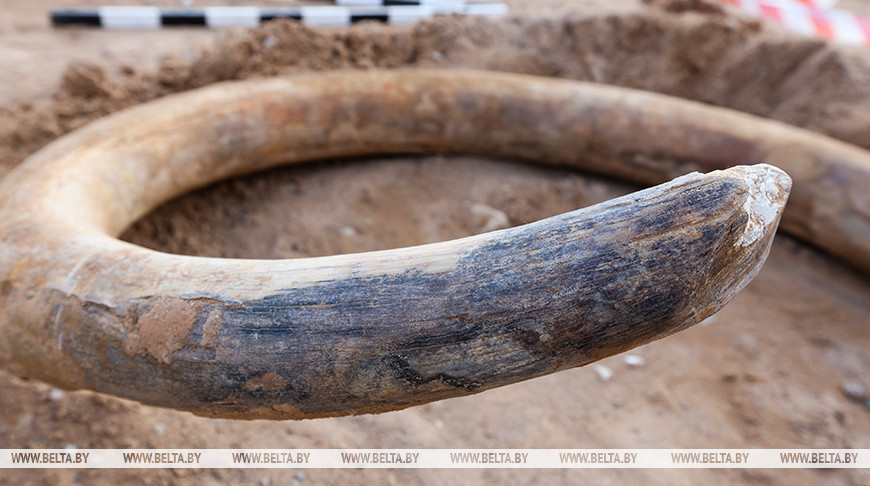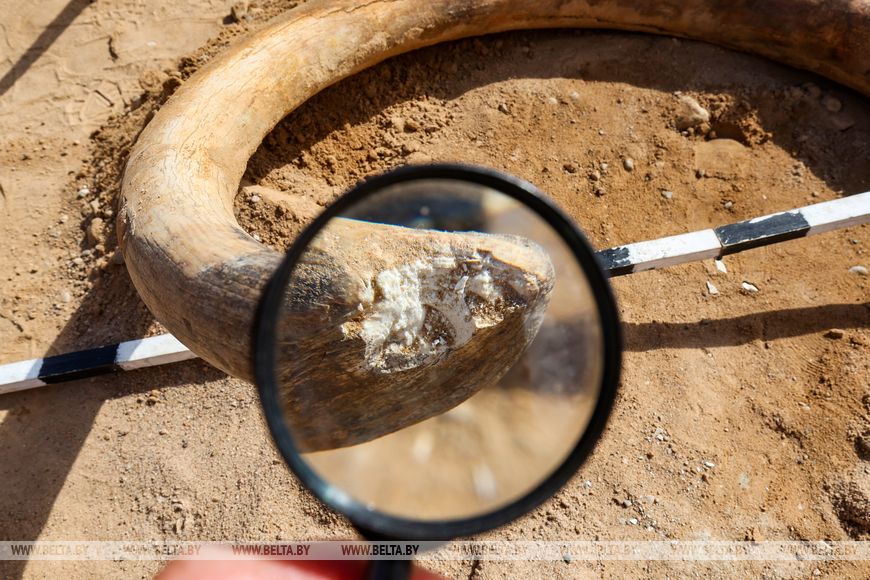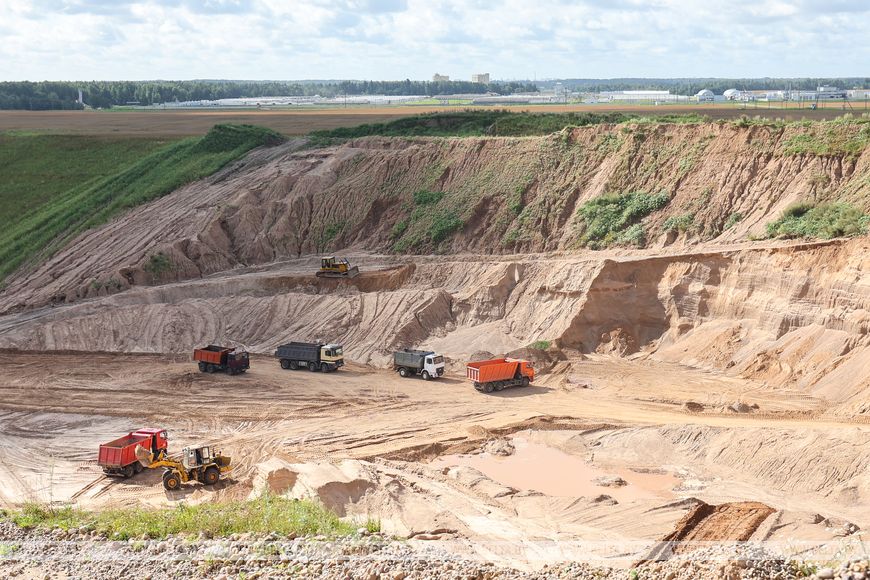
MINSK, 13 August (BelTA) - Archaeologists will conduct excavations near Vitebsk following the discovery of a mammoth tusk, Aleksei Avlasovich, Head of the Center for Archaeology at the Institute of History of the National Academy of Sciences of Belarus, said at a press briefing, BelTA learned.
As BelTA has previously reported, during road construction near Vitebsk, workers made a remarkable discovery - a fully intact, well-preserved mammoth tusk. Thanks to the crew’s swift response and careful handling, the artifact was successfully recovered without damage.
“Modern science doesn't exist in a vacuum - all scientific disciplines are interconnected. Archaeologists utilize methods from related fields, including paleontology. There are many misconceptions, so let me clarify: we don't search for dinosaurs or mammoths. Archaeology deals exclusively with human history. Yet mammoths belong to the period when humans lived and evolved. Often, we can find traces of human activity on the bones or antlers of ancient animals. Regarding the Vitebsk discovery, I first want to thank the construction crew who worked there, treated the find carefully and reported it," Aleksei Avlasovich said.


The mammoth tusk will be put on display in the new building of the National History Museum. 'This is a substantial find with exceptional preservation. Over 90% of it is intact,” Aleksei Avlasovich emphasized.
As BelTA has previously reported, during road construction near Vitebsk, workers made a remarkable discovery - a fully intact, well-preserved mammoth tusk. Thanks to the crew’s swift response and careful handling, the artifact was successfully recovered without damage.
“Modern science doesn't exist in a vacuum - all scientific disciplines are interconnected. Archaeologists utilize methods from related fields, including paleontology. There are many misconceptions, so let me clarify: we don't search for dinosaurs or mammoths. Archaeology deals exclusively with human history. Yet mammoths belong to the period when humans lived and evolved. Often, we can find traces of human activity on the bones or antlers of ancient animals. Regarding the Vitebsk discovery, I first want to thank the construction crew who worked there, treated the find carefully and reported it," Aleksei Avlasovich said.



According to him, researchers plan to survey the site. “Most likely the discovery is not an archaeological artifact, as no evidence of human presence has been found yet. But we are being cautious in our assessment. To verify this, we will conduct thorough investigations," the scientist noted.
The mammoth tusk will be put on display in the new building of the National History Museum. 'This is a substantial find with exceptional preservation. Over 90% of it is intact,” Aleksei Avlasovich emphasized.













